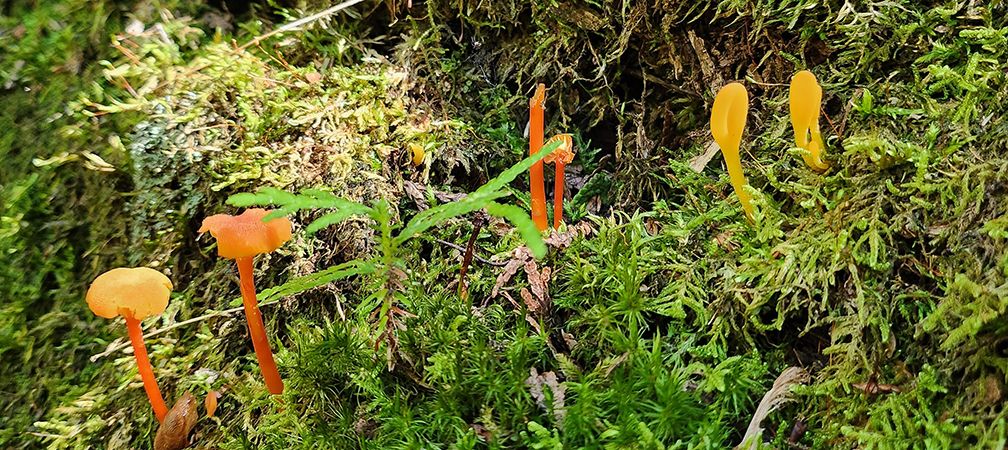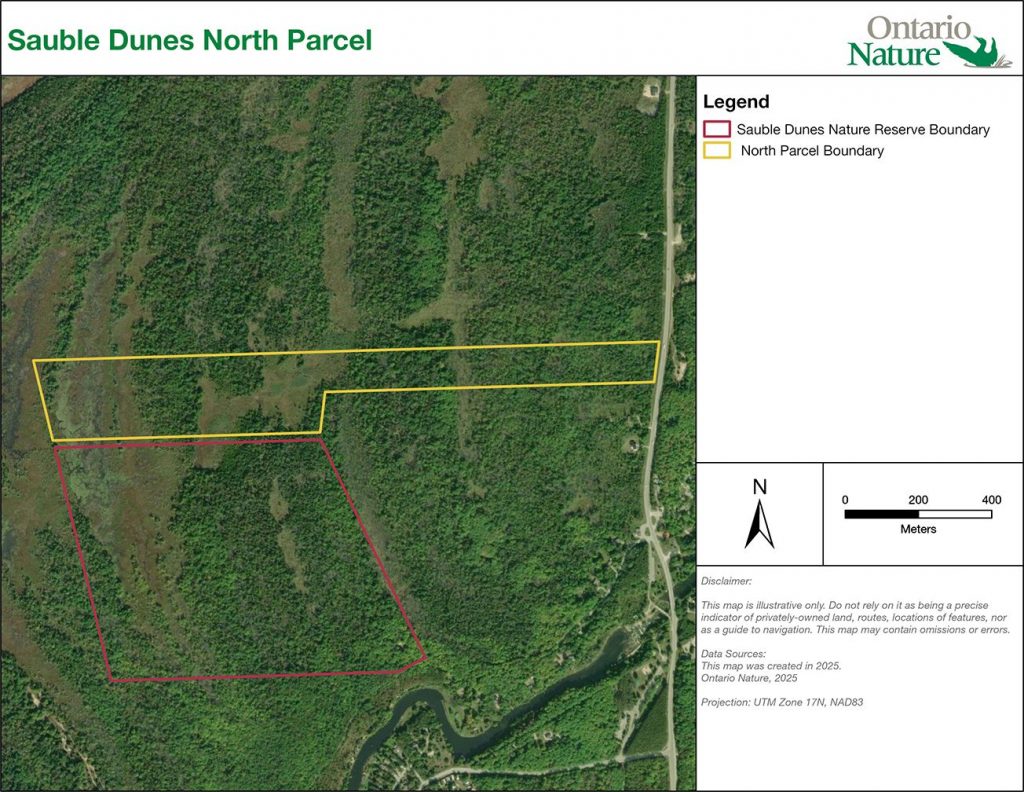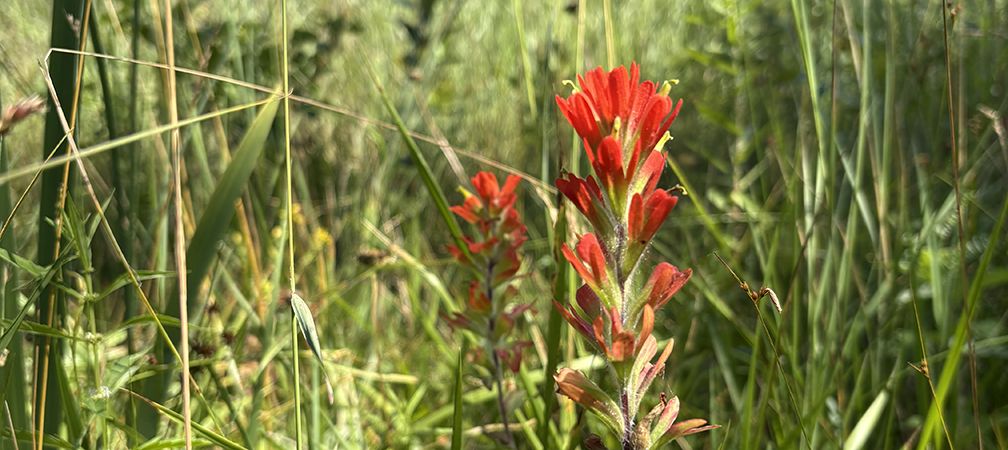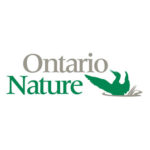Ontario Nature Blog
Receive email alerts about breaking conservation
and environmental news.
© Lora Denis
Tharanya, cattail marsh at Sauble Dunes Nature Reserve © Wakely Jibb
Earlier this year, we visited the Saugeen Bruce Peninsula to conduct ecological land classification (ELC) at a property Ontario Nature is seeking to protect adjacent to our Sauble Dunes Nature Reserve. From the moment we stepped onto the site, it was clear this landscape held remarkable ecological richness.
Upon entering the property, we were met with a canopy consisting of towering red maple, white birch and a dense subcanopy of balsam fir. The forest was alive with sound – the canopy echoed with buzzy calls of the black-throated green warbler, fluty calls of the wood thrush and melodic chips of the red-eyed vireo. Below, the forest floor was no less vibrant. Lush carpets of moss spread between tree roots, while bright orange goblet waxcaps and yellow earthtongue mushrooms sprouted from decaying logs and ferns unfurled in dappled light. This thriving ground layer is a sign of a healthy, biodiverse ecosystem.

Sauble Dunes Nature Reserve is located at the southern end of the Saugeen Bruce Peninsula, inland from the eastern shore of Lake Huron and 5km north of Saugeen Beach. Sauble Dunes North features forested sand dunes and wetlands that lie directly north of the existing 51-hectare protected area.
ELCs delineate plant community boundaries which helps with conservation planning, stewardship, and future monitoring. This involves using desktop software to delineate boundaries of each habitat type, then confirming those boundaries on the ground. In each habitat type, a plot is demarcated where the hydrological characteristics, canopy cover, vegetation, and soil are analyzed to provide a classification.
The western edge of the parcel is a striking expanse of open water, where large yellow pond lily thrives. Reaching this remote area required wading waist deep through a cattail marsh, which was challenging but worth the effort.
This vibrant marsh was full of swamp milkweed, a vital host plant for monarch larvae. Other pollinator-friendly plants like common boneset, also flourish in this rich, wetland habitat.
Continuing east through the parcel, the landscape shifts into a forb marsh, characterized by grasses and often found along the edge of wetlands. Moving further inland, the terrain transitioned into a mixed hardwood forest.

Tucked within the mixed hardwood forest, we found an unexpected gem: a black ash swamp! Black ash is an endangered species in Ontario which is home to 25% of its global range. Emerald ash borer is the primary threat to black ash trees, causing a drastic rate of mortality in the species and expecting to cause a 70% decline of black ash in the next 100 years.
Finding a stand of these trees still thriving in the wild felt hopeful, a reminder of how important it is to protect and preserve these nature reserves. This is an important component of protecting the lives and longevity of these native species.

A blooming scarlet paintbrush bid us farewell as we exited the eastern side of the parcel. This flowering plant is a rare sight, however it is found on the Saugeen Bruce Peninsula.
The protection of 26.7 hectares of unique habitat marks an exciting step forward in protecting this remarkable landscape and the vital species that depend on it for survival and contribute to its ecological health. Learn more about the nature reserves near you and the expansion of the Sauble Dunes Nature Reserve! You can help protect the health and beauty of these important natural areas by supporting the acquisition project today.
As a charitable organization, Ontario Nature depends on the generosity of our members and other partners to protect and expand our Sauble Dunes Nature Reserve. Previously slated for development, this land supports 24 species at risk and 41 rare species. Together, we can ensure it is permanently protected. This Giving Tuesday, please consider helping us reach our goal of raising $40,000 to expand and protect Sauble Dunes North.

Tharanya Ravikumaran is Ontario Nature’s Stewardship Coordinator, Nature Reserves. Tharanya has a B.A. in bio-resource management (majored in Environmental Management) from the University of Guelph and has completed the ecosystem restoration program at Niagara College.

Wakely Jibb is Ontario Nature’s Nature Reserves Intern. Wakely has a B.Sc. (Honours) in Biology from Queen’s University.

Lakeside daisy, Saugeen Alvar Nature Reserve © Noah Cole
In the Town of Grimsby,behind the Giant Tiger store ,there are two Black Ash trees. No one knows they are there but one day ,to my astonishment ,two Town employees were picking up garbage in the area. There may be more Black Ash in the area.